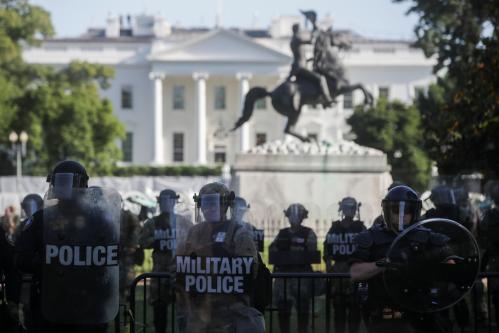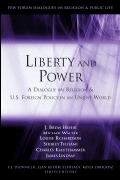Early last month, Tausug villagers on the Southern Philippine island of Jolo heard a buzzing sound not heard before. It is a sound familiar to the people of Waziristan who live along Pakistan’s border with Afghanistan, where the United States fights the Taliban. It was the dreaded drone, which arrives from distant and unknown destinations to cause death and destruction. Within minutes, 15 people lay dead and a community plunged into despair, fear and mourning.
The U.S. drone strike, targeting accused leaders in the Abu Sayyaf and Jemaah Islamiyah organisations, marked the first time the weapon has been used in Southeast Asia. The drone has so far been used against Muslim groups and the Tausug are the latest on the list.
Just as in Pakistan and other theatres of the “war on terror”, the strike has provoked controversy, with a Filipino lawmaker condemning the attack as a violation of national sovereignty. This controversy could increase with the recent American announcement that it plans to boost its drone fleet in the Philippines by 30 per cent. The U.S. already has hundreds of troops stationed on Jolo Island, but until now, the Americans have maintained a non-combat “advisory” role.
The expansion of U.S.’ drone war has the potential to further enflame a volatile conflict involving the southern Muslim areas and Manila, which has killed around 120,000 people over the past four decades. To understand what is happening in the Philippines and the U.S.’ role in the conflict, we need to look at the Tausug, among the most populous and dominant of the 13 groups of Muslims in the South Philippines known as “Moro”, a pejorative name given by Spanish colonisers centuries ago.
Sulu Sultanate
For hundreds of years, the Tausug had their own independent kingdom, the Sulu Sultanate, which was established in 1457 and centered in Jolo. The Sultanate became the largest and most influential political power in the Philippines with highly developed trade links across the region. From this base among the Tausug, Islam took root in neighbouring Mindanao Island among the Maguindanao and other groups.
The antagonistic relationship between the Moro periphery and the centre in Manila developed during the Spanish colonial era. The Spanish had arrived not long after expelling the Muslims from Spain and, intoxicated by that historical victory, were determined to exterminate Islam in the region and unite the Philippines under Christian rule.
In the instructions given by the Spanish governor on the eve of the first campaign against the southern Muslims in 1578, he ordered that “there be not among them anymore preachers of the doctrines of Mahoma since it is evil and false” and called for all mosques to be destroyed. The governor’s instructions set the tone for centuries of continuous warfare. The idea of a predatory central authority is deeply embedded in Tausug mythology and psychology.
Of all the Moro groups, the Tausug has been considered the most independent and difficult to conquer, with not a single generation of Tausug experiencing life without war over the past 450 years.
As any anthropologist will testify, the Tausug have survived half a millennium of persecution and attempts at conversion because of their highly developed code and clan structure. It is the classic tribe: egalitarian and feuding clans that unite in the face of the outside enemy and a code which emphasizes honor, revenge, loyalty and hospitality.
It was only in the late 19th century that Spain succeeded in incorporating the Sulu Sultanate as a protectorate and established a military presence on Jolo. The Spanish were followed by American colonisers who could be as brutal as their predecessors. In a 1906 battle, U.S. troops killed as many as 1,000 Tausug men, women and children, and between 500 and 2,000 in a 1913 engagement.
Despite the Moro resistance to U.S. colonial rule, they advocated for either continued American administration or their own country, rather than be incorporated into an independent Philippines, which they believed would continue the policies of the Spanish against their religion and culture. The request, however, was rejected.
‘Special provinces’
Following independence in 1946, the Muslim regions were ruled as “special provinces” with most of the important government posts reserved for Christian Filipinos. Despite being granted electoral representation in the 1950s, the majority of Moro had little interest in dealing with the central government. Manila, for its part, largely neglected the region.
The Tausug areas remained impoverished and, in the absence of jobs, young men turned to looting and piracy. In response, Manila opted for heavy-handed military tactics and based its largest command of security forces in the nation among the Tausug.
Central government actions to subdue the Tausug areas in the 1950s resulted in the deaths of almost all fighting age men in certain regions. The society was torn apart, with the young generation growing up without traditional leadership.
The current conflict began in 1968 with what became known as the Jabidah Massacre, when around 60 mainly Tausug recruits in the Philippine Army were summarily executed after they refused a mission to attack the Malaysian region of Sabah, where a population of Tausug also resides.
In 1971, the Moro, incensed by Jabidah and accusing the central government of conducting “genocide”, began an open war against the state. A Tausug-dominated independence movement soon developed called the Moro National Liberation Front (MNLF). In 1976, the government reached an agreement with the MNLF to grant the Moro areas autonomy, which was further developed in a 1996 treaty that is still being negotiated.
For many Moro living on Mindanao, however, the deal was unsatisfactory because of the presence of so many Christian settlers, who they complained were taking more and more of their land under what seemed like government policy.
Indeed, the population had dramatically changed from 76 per cent Muslim in 1903 to 72.5 per cent Christian by 2000. The government was arming Christian settlers to attack Muslims. In 1971, the most notorious Christian militia, the Ilaga, killed 70 Moro in a mosque. Muslim militias lashed back, leading to a cycle of violence.
A new group, the Moro Islamic Liberation Front (MILF), based in Mindanao’s Maguindanao ethnic group, soon split from the MNLF and vowed to push for secession.
‘Abu Sayyaf’ label
Following the 9/11 attacks, the United States became involved in the region in pursuit of the elusive Abu Sayyaf, which it accused of having links with al-Qaeda. The group was formed by a charismatic Tausug preacher in the late 1980s, whose speeches attracted angry young men from a community rife with orphans due to the previous decades of war.
Abu Sayyaf has been blamed for kidnappings, bombings and beheadings, gripping the Philippines with sensational media reports. Manila has been accused of applying the “Abu Sayyaf” label to any conflict in the region, including those involving small armed Tausug groups, many of them kinship based, which have existed for centuries.
Aid workers kidnapped in 2009, for example, reported that their “Abu Sayyaf” captor told them “I can be ASG (Abu Sayyaf Group), I can be MILF, I can be [MILF or MNLF breakaway group] Lost Command”.
Manila was discovering, like many other nations after 9/11, that by associating its restless communities on the periphery with al-Qaeda, it could garner easy American support.
To resolve the conflict between the Moro and Manila, President Benigno Aquino must demonstrate that the centuries of conflict and forced assimilation into a monolithic Filipino culture are over. The government needs to promote pluralism and build trust with the periphery.
With the recent declarations by President Aquino’s government that the state is fully invested in implementing the 1996 autonomy agreement with the MNLF and hopes to have a peace treaty in place with the MILF by 2013, the various parties have a unique opportunity to work for a longstanding solution.
Development projects to help the suffering Tausug must be conducted urgently as the situation for ordinary people is dire. Amidst the frequent barrages of artillery and bombs and the displacement of hundreds of thousands over the past decade, a 2005 study found that 92 per cent of water sources in Sulu Province, where the majority of Tausug live, were contaminated, while the malnutrition rate for children under five is 50 per cent. Education and employment are constant challenges.
The sad state of affairs does not only result from a lack of funds, as the Philippines government, the United States and others have poured millions into the region, but rather how funds are spent. The association of development with the military among the population has been an impediment to implementing necessary projects.
Mediation needed
Between inefficient aid funding and the ongoing military campaigns, Manila has been drained of desperately needed resources and diverted from fulfilling its ambitions to become an economic powerhouse.
Development solutions can only work if they have the full support of the clans that decide local politics, which is no easy task, considering the tenacity with which clans can fight over resources. Yet with a holistic plan of engagement in the context of true autonomy, it is possible to bring them together.
Mediation, involving local religious leaders and international bodies like the Organisation of Islamic Co-operation, which has taken the lead in peace talks between the Moro factions and the government, can play a key role in this regard.
Major General Reuben Rafael, the Philippine commander formerly in charge of military operations in Sulu Province, gave us an example of how to proceed. In 2007, he staged a public apology for transgressions against the population. The assembled people began to cry, including the Tausug mayor of the town, who stated that never in the history of Sulu had a military general apologized to them in such a manner. This is the way to the heart of the Tausug, and we salute the general for showing us the path to peace.
By unleashing the drones, the U.S. has pushed the conflict between centre and periphery in the Philippines in a dangerous direction. If there is one lesson we can learn from half a millennium of history it is this: weapons destroy flesh and blood, but cannot break the spirit of a people motivated by ideas of honour and justice.
Instead, the U.S. and Manila should work with the Muslims of the Philippines to ensure full rights of identity, development, dignity, human rights and self-determination. Only then will the security situation improve and the Moro permitted to live the prosperous and secure lives they have been denied for so long; and only then will the Philippines be able to become the Asian Tiger it aspires to be.


Commentary
Op-edDeadly Drone Strike on Muslims in the Southern Philippines
March 5, 2012